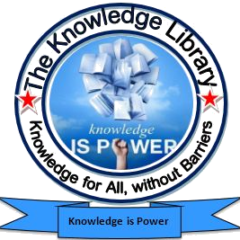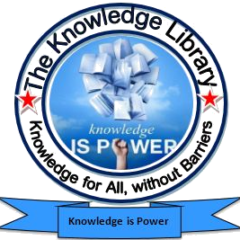Career Guidance for Students
Career guidance refers to career planning for students, which enables them to make informed decisions about their future or career paths. Students can explore various options with the right set of career counseling benefits that align with their strengths, interests, and preferences. To achieve long-term success and job satisfaction, choosing the right career matters.
Why is Career Guidance Crucial for Students?
Career guidance helps students to make informed decisions about their future or career path. It ensures whether the chosen path aligns with their interests, skills, preferences, and long-term goals, while the following key reasons explain why career guidance is essential.
1. It identifies the student’s interests, weaknesses, and strengths that create self-awareness development to choose careers.
2. It ensures students choose careers that align with their future goals and personal ambitions.
3. The proper guidance provides insights enabling students to have informed decision making which reduces uncertainty.
4. The proper guidance avoids career mismatch which students may regret later due to lack of awareness or guidance.
5. The proper guidance helps students to enhance their skill set and knowledge to improve the employability factor.
6. It prepares students to adapt to the changing markets, evolving job trends, and emerging career options.
7. Proper guidance leads to higher job satisfaction which aligns with their interests and long-term goals.
8. The proper guidance equips students with confidence, clarity, and motivation which automatically reduces the anxiety about the future.
Steps to Find the Right Career Path for Students
Choosing the right career path needs a structured approach that enables students to make informed decisions. It is important to follow a procedure as it shapes the student’s future and overall job satisfaction that aligns with their interests, skills, and aspirations. The following is the step-by-step process for students to identify their ideal career path.
Career Guidance for Students
Self-Assessment and Identifying Interests
- Self-assessment plays a crucial role in taking the first step in choosing the right career path.
- Students must identify their interests by evaluating their strengths and passions.
- This helps them with a basic understanding of what careers could suit them best.
- Self-reflection helps them find out what excites them, their natural strengths, areas to improve, and principles they need to adapt.
- Several tools provide insights that help them identify suitable career choices.
- Discussing with peers, family, friends, and consultants does a great job of gaining valuable guidance.
Exploring Career Options
- After understanding the interests and abilities, the next step leads to research and explore the potential career options.
- This practice explores different industries, jobs, roles, and market demands.
- Learning about professions, job descriptions, work environments, and skills gives an idea of what the prospects may await.
- Indulging in networking helps to form and maintain connections, leading through career fairs, seminars, lecturers, and mentorship.
- Analyze the job market and trends to get hold of the idea of stable and emerging careers.
- Students should consider both non-traditional and traditional career paths to explore new opportunities.
Setting Realistic Goals
- Students must have to set short-term or long-term goals after exploring multiple career options.
- They should understand and interpret what goals align with their desired profession.
- Have a clear route map for career development by setting realistic objectives.
- Use SMART (Specific, Measurable, Achievable, Relevant, and Time-bound) strategy to break down long-term goals into manageable steps.
- Find ways to keep motivated and measure the progress to develop the necessary skills.
- Include relevant courses and gain certificates if the goals are short-term.
- Focus on career progression with higher education, if the goals are long-term.
Gaining Experience Through Internships or Volunteering
- Gain practical experience to understand the real-world aspects, challenges, and problems.
- Indulge in internships, part-time jobs, group discussions, or volunteering opportunities to gain hands-on experience.
- Enhance workplace skills such as teamwork, problem-solving abilities, and communication.
- Understand the day-to-day responsibilities of a professional in an industry or an organization.
- Connect with industry professionals and build a network that helps you maintain future career growth.
- Test career interests to determine if a chosen field suits you or if you are the best fit for such a role.
- Be mindful that the above hands-on experience strengthens the resume and portfolio in a competitive job market.
Career Guidance for Students
The Role of Career Counselling and Professional Guidance
Career counseling and professional guidance enable students to make informed decision making. Let’s look at why it matters.
1. Counseling and professional guidance provide personalized career advice for students based on their interests, strengths, and aspirations.
2. They offer industry insights with updated knowledge and skills that align with job trends, growth opportunities, and future career prospects.
3. They indulge students in psychometric tests with career assessment tools to identify and assess them.
4. They connect the students with internship and advocacy support by putting them in the job market.
5. They ensure students set out with proper goal setting might be short-term or long-term career goals.
6. They suggest relevant courses and skill development guidance that are required for chosen careers.
7. They provide reassurances to the students to overcome their career anxiety or stress.
8. They help students to make a good decisions with structured approaches.
9. They offer continuous support for students to obtain long-term career planning, transitions, and advancements.
10. They help students with alternative career options that are diverse and unconventional.
Overcoming Common Career Decision Challenges
Encountering challenges during choosing a career path is inevitable. Well, overcoming such challenges leads to success. Let’s discuss the common challenges and solutions to overcome them.
1. Uncertainty about career choice
Many students lack self-awareness about the ideal career based on their interests or strengths.
Solution: Get self-assessment, test aptitude, seek career counseling, and explore different fields.
2. Lack of awareness about career options
Students are unaware of the available career opportunities and the range of such.
Solution: Attend career fairs, explore online career resources, and network with professionals.
3. Parental-Social pressure
Parental or social pressure may push students to take up careers that don’t align with their interests or strengths.
Solution: Have open discussions about personal aspirations with family.
4. Peer influence
This is a pressure based on the friend’s career choices.
Solution: Focus on personal strengths and personal interests rather than copying somebody else.
5. Fear of making the wrong decision
Students may feel anxious and frightened about making the wrong decision which leads them backwards.
Solution: Seek expert’s advice and gain experience through workshops or internships.
6. Mismatch between passion and market demand
If the student’s passion does not match with the market demand, it might not result in lucrative career opportunities.
Solution: Find ways to integrate your passion with study and lucrative career paths.
7. Financial constraints
Professional training or higher education may be expensive and unaffordable for certain classes of students.
Solution: Look for financial aid and scholarships and search for online courses or vocational training that are affordable.
8. Overwhelming career information
Students are loaded with overwhelming information to choose an inefficient career path.
Solution: Break down large information into small research steps to match your strengths and interests.
9. Lack of confidence and skills
Students with fewer skills feel no confidence at all to navigate their desired careers.
Solution: Build essential skills through practical experiences, consultations, certifications or courses.
10. Hesitation to seek advice
Many students shy away from seeking advice from fellow beings due to their inhibitions.
Solution: Encourage open and clear discussions to gain valuable insights and clarity.
Career Guidance for Students

